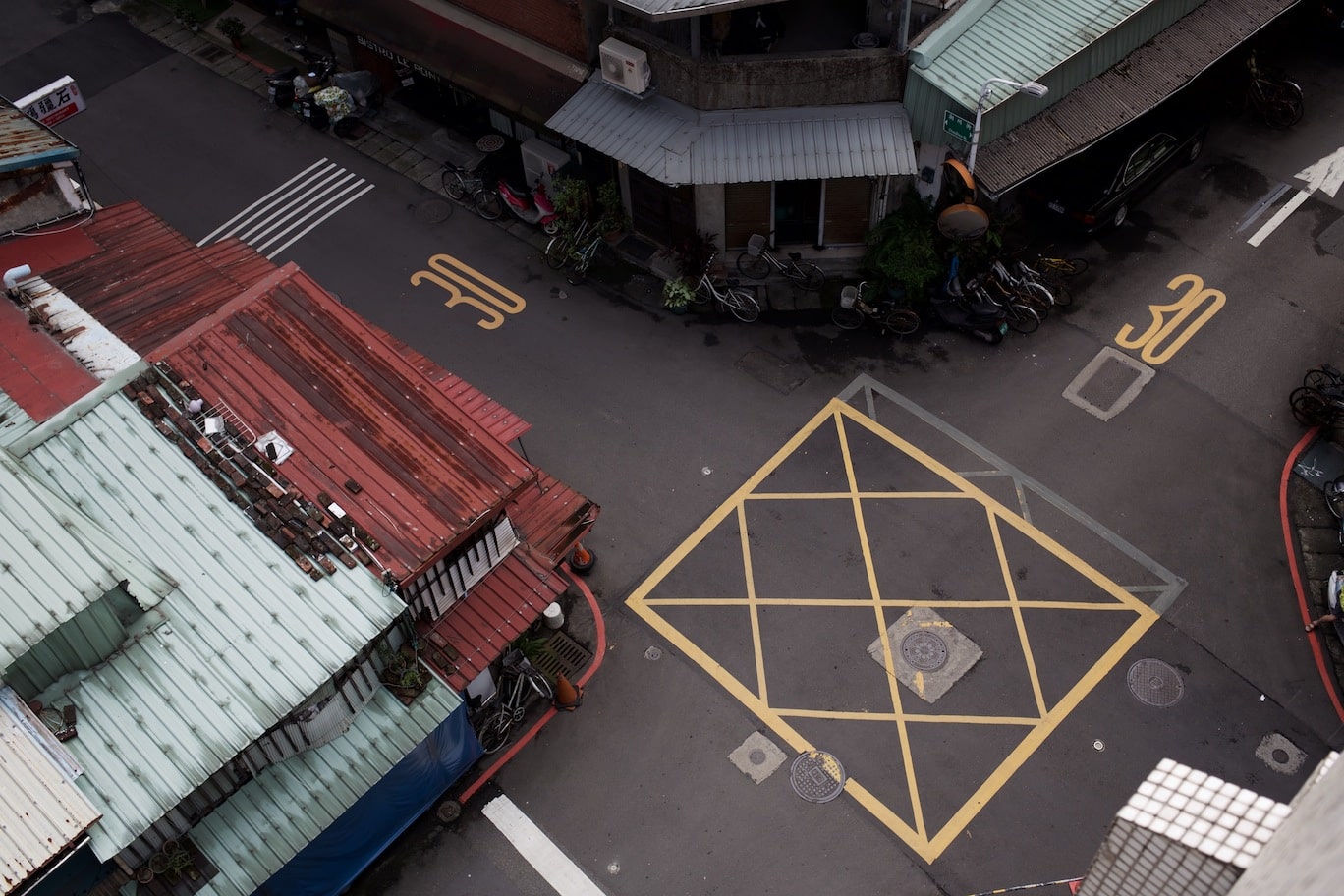
Taipei, Taiwan © Daniel Niles, 2017
The Material Order
Do cultural ideas order our material worlds and technologies, or is it the other way around? In their conversation, archaeologist and sustainability scientist Sander van der Leeuw and human-environmental geographer Daniel Niles discuss how the technosphere is to be seen in the context of a long-term coevolution of spatial organization, language, and other forms of information processing that simplify the environment for the sake of complexifying societies.
Daniel Niles: I want to ask you about how we understand the quality of things in the context of the technosphere. Because you and I are interested in material culture, even in the context of all these pervasive technological systems in which we’re embedded and which seem so important at the large scale, we still interact with things in the everyday world and we say that those things are important to how we understand and act in our world.
So the question is really: Why? How can we understand the significance of everyday things and materials given the scope and scale of technological systems in our contemporary time?
- Sander van der Leeuw: Well, let me give you an evolutionary perspective. I think our technological world basically reflects a very long-term set of basic conceptions about the organization of the world around us. That set of conceptions has been modified over time, either by amplification or in the margin. I think our current ideas about technology are incredibly path dependent. If you take a coevolutionary perspective on humans, their material world, and their ideas, you see that the material world is a component in human information processing. And you see that the material world therefore takes on an increasingly important role through time, because it actually takes away a lot of the repetitive decision-making that has to be done if you were to simply operate without all the tools and things we have created around us. So the material world simplifies and structures our world. At the same time, I do believe that in our time we are still ruled by a set of world-view dimensions that is probably several millennia years old. We have played with this set, and amplified it through time, and also found it difficult at times and had to change it in certain ways to deal with particular problems. In addressing those issues, we may indeed have solved some immediate problem, but only to create longer-term issues that we then had to start dealing with.
Daniel: Are you thinking in terms of past environmental constraints?
- Sander: Environmental problems but also more mundane technological challenges addressed by the benches on which we’re sitting, the potted plants around. Everything, our whole technological world. Here we are in a Western universe and everything in most buildings is in straight lines. If you go to Papua New Guinea, many buildings are round. If you go to the settlements of the Mayan people in the Yucatan, they are in ellipses. The basic spatial conceptions—the house, or the way that you organize an agricultural field, and everything else—these dimensions rule, to a very large extent, how our technologies actually evolve.
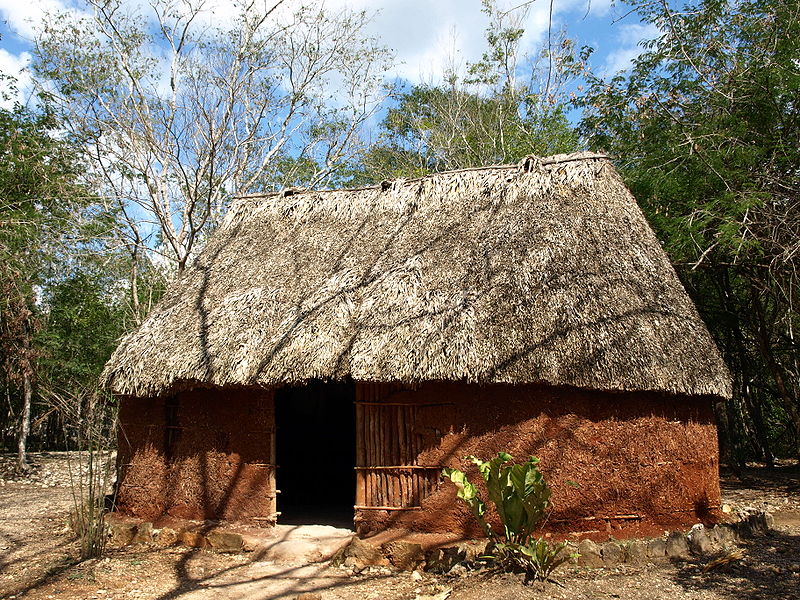
large
align-left
align-right
delete
Daniel: Do you think that those different basic line forms are linked to people’s conceptions of what, I’m tempted to say, are the agencies or active properties of the world?
- Sander: Yes, but not only the active properties or agencies; also the order of the world. I’ll tell you a story. I had a colleague when I was still in Holland and he was at Cambridge. He did a piece of research on burial customs over several centuries in a tiny community where there wouldn’t be more deaths than maybe six or so per century. He found that despite this small number of deaths, the burial customs remained stable over that whole period. So he wondered how it was that they were not forgotten. And the only solution that you can come up with is that other parts of the ideational world of that group created a thought framework that was expressed at very many different scales, in very many different parts of their everyday life, and that those ingrained patterns allowed them to actually reconstitute the burial customs.
Daniel: Something that I think is really interesting here is that when you start thinking seriously about material culture or materials, they can be seen essentially as instantiations of patterns of ideas. In this sense, the more deeply you think about material culture, the less unique material culture seems to be as an element of the ideational world.
- Sander: I firmly believe that ideas far outlive any particular kind of technology. That idea begins to coincide with the work of W. Brian Arthur, whose book The Nature of Technology: What It Is and How It Evolves completely upset the worldview of economists—Arthur is an engineer and also an economist—by arguing that it’s actually technology that determines the economy, rather than the economy that determines technology. I believe that he is right. I think the foundations of our spatial organization, of our thought categorization, and so on, are partly anchored in language, and this of course already gives them a continuity. But I think that the deeper continuities even go beyond that, into people’s ideas about the order of the world.
Daniel: What does this mean for the technosphere if you have a comprehensive view of technology today? If technology is so pervasive in structuring the material environment, are you putting technology in the driver’s seat?
- Sander: Well, I don’t think technology is fully in the driver’s seat in general, but it is in the driver’s seat when it comes to our relationship to the material world. Yes, I think there is a whole different domain that also has its own path-dependent development, which is the societal domain and our social relations. There may also be relationships between technology and social relations that are important.
- One of the things that we’re seeing right now with the information technology revolution is that this relationship between the social and the technological is beginning to play a greater role, because social relations are—just like technology—basically information relations. But they play out in a different domain; they are not limited in the social sphere by the same kinds of constraints that you have for the material world. I think there may be links between them, but I do believe that you have to consider the social domain as different from the environmental domain and from the material domain. I think that we see over the long term that as people complexify their society, they simplify their environment. And they do that, for example, by creating an agricultural field and investing in the environment to get a yield. That field is basically homogeneous, except in cases where you have a kind of polyculture, or a complex system. But the agricultural field does become a space that is, to an extent, controllable, because diversity is limited. At the same time, as human groups grow—and the transition to agriculture is part of a transition to a growing group—social problems become more and more difficult to solve.
- So I think there is an exchange in which our information processing simplifies the environment and so facilitates the flux of energy into society. That flux is compensated for by a flux of organization outward from society into the environment.
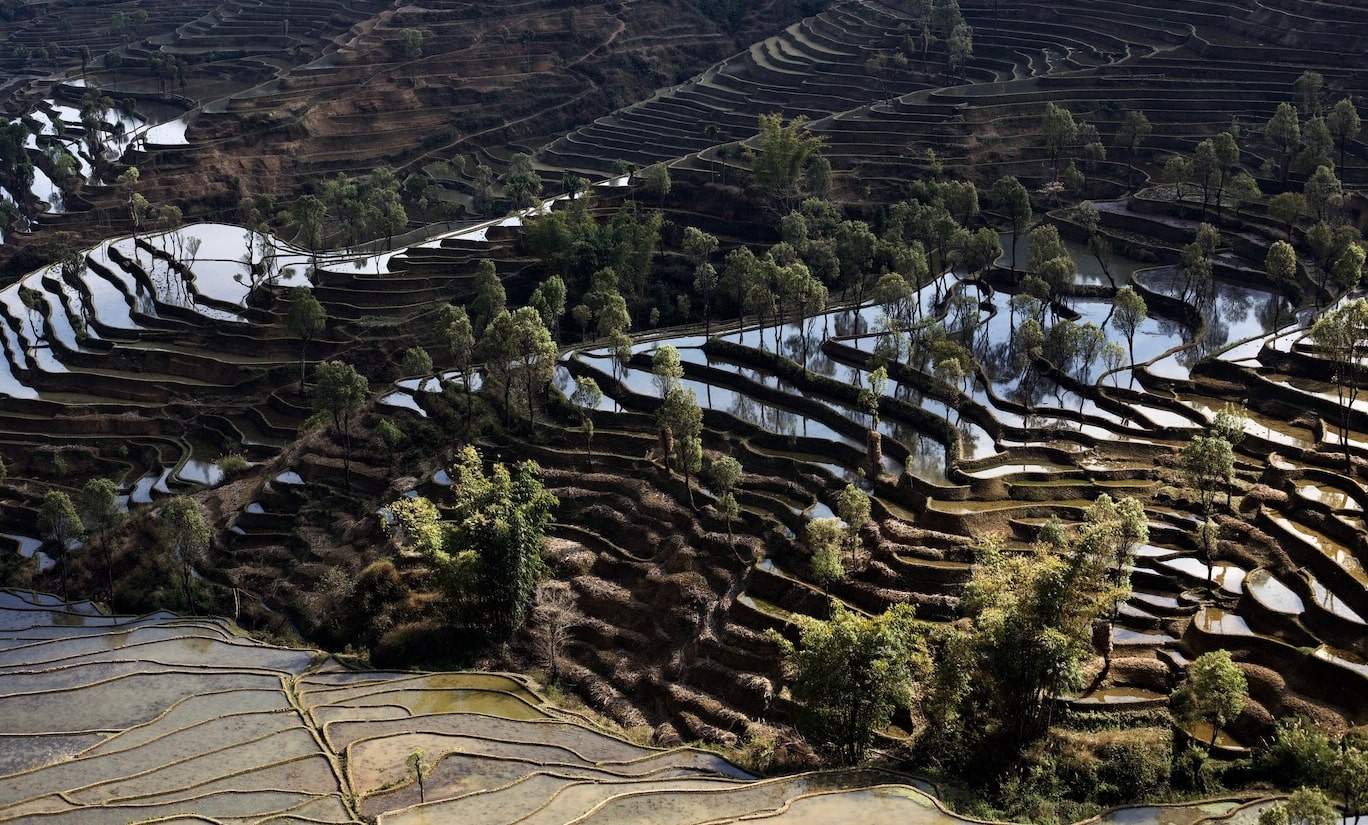
large
align-left
align-right
delete
Daniel: Which now is essentially the technosphere?
- Sander: Yes, yes that’s right. And that is also what the Anthropocene is all about.
Daniel: In that sense, though, one of the things that I think about these days is how we distinguish the qualities of things, in the sense that they are representational of this information that is being externalized into the environment.
Closer attention to the physical qualities of things should allow us to make important decisions about the environments in which we live. And I have to admit that although I can think of nice examples that exist on a relatively small scale—for example, the idea of relocalization of food—there is something substantial about even the conceptual problem of localization that we are still trying to grapple with. But when it really comes to the large flux of organization that is globalization, the Anthropocene, the technosphere … these endeavors don’t quite seem equivalent.
- Sander: Well, I think that is related, for example, to the transformation during the 1830–40s in Britain. Until that point, the economy served the society, but then it switched to the situation in which the society serves the economy. A number of simplified economic dynamics have actually taken control of society, and those dynamics are basically the roots of our capitalist system. Once you begin to look at it like that, the capitalist system is no longer an inevitable thing. And the continued innovation of the technosphere is not necessary to the future but rather actually a historical choice that we have made. We can make another choice and I think that is really important. In all of this, one of the fundamental issues is that of values. I argue in my forthcoming book that globalization over the last century and a half—it has been going on much longer than that which we typically call globalization—has imposed on many high-dimensional cultures a really lowest common denominator, which is money and material value. So we have seen shifts from societies in which people could, on the one hand, identify with the society but also distinguish themselves within the society along a very large range of dimensions, to a system where there is only one dimension that still counts. And that single value (money), internationally and in particular in the United States, is a major factor in the world today. It is, in my opinion, one of the factors behind the populist revolt that we’re are seeing right now. I think there is an identity crisis in which people don’t feel that they are being valued anymore in their own societies. So for me it is the takeover of society by the economy that is at the root of that whole story.
Daniel: And this absence of deeper value is part of the reason why the material cultural complex here in the United States—the same big box stores, sidewalk pavements, chain retailers, products that are seconds away from disposal—seems so empty. It seems so very thin.
When I said previously it doesn’t seem that the material culture realm is quite equivalent to the technospheric realm, that’s a bit of a false comparison, because I do think—and you mentioned Papua New Guinea and other places—that in fact there are many examples of much more closely linked material social and environmental complexes. And there should be within those, not just metaphorical examples, but actually real ways in which people find themselves embedded in tangible and positive social-technical-environmental relationships.
- Sander: Absolutely, and one of the really important parts of that is that a lot of those relationships are actually dematerialized. A lot of those relationships are things in and of the mind. I would argue—and I have argued for a long time, but for a long time against everybody else—that what you actually see is a sort of an externalization of our value set. So we have gone from moral, ethical, and other internalized values to values that are externalized, that are extensions of our possessions, that are part of our status and stuff like that, but that otherwise are totally empty.
Daniel: This is the dilemma of how to regrasp the sense of value.
- Sander: Yes, you’re absolutely right. That is why I’m so impressed by Japan, because I think Japan is the only modernized culture that has really retained a number of its original social values. That is why community is so important there. Japan is quite unique. There are many studies about how acculturation happens, but Japan is one of those cultures that has retained its own identity and that has adapted parts of external trappings, partly under American pressure, that sort of give it its industrial splendor. But the underlying culture in Japan is very, very different from anywhere else. And I think we need more of those kinds of contexts. That’s why I think maybe it’s actually a blessing that the Japanese population is going down, because it might actually allow Japan to become more introverted again, playing less of a huge role on the world stage and at the same time grounding itself better in its own environment, etc. But this may currently be very controversial for the Japanese.
Daniel: Yes, Japan is such an interesting example because right away, as essentially a modern person, you confront this modernity in a completely different form. And it’s very disconcerting and fascinating at the same time, and one of the immediate ways you sense that is just walking in its streets.
- Sander: Indeed, you’re right.
Daniel: Westerners, when you see them walking, they’re kind of awkward. They tend to fall off curbs and bump themselves on little bumps and can’t quite figure out the doors or the stairways or which way is this or the other.
- Sander: So what does that say? It says that Japan has its own spatial organization, which is not shared by any of the other Western cultures, even though in some places cities have been adapted quite a bit. But if you take a more traditional view, like you have in Kyoto and in smaller places, you realize that the whole spatial setup is very fundamentally different.
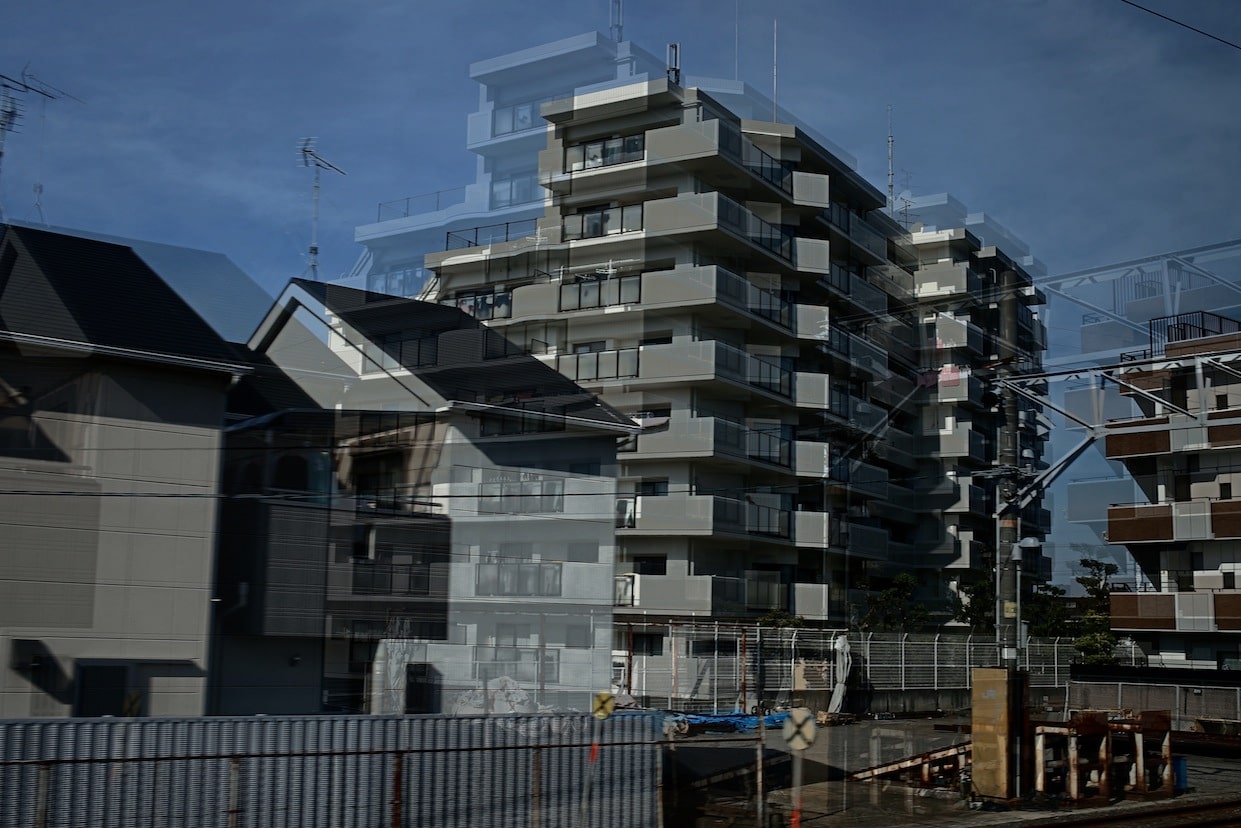
large
align-left
align-right
delete
Daniel: It’s very different, and here we come back around because that, in turn, has to do with what the French would call people’s body techniques. And there you begin to see that the spatial organization, the body techniques, and the material culture are linked in very tight ways, all of which in Japan are equally foreign to us.
- Sander: Yes. Now let me sort of launch a word that you may have used in the past but likely not in this context. Early on, people like André Leroi-Gourhan began working on the relationship between language, materiality, and what I would call the technosphere. They coined this word, “tendance.” To translate it basically from French to English, it is simply “tendency,” but it is a concept that from a different thought-world captures the idea of path dependency. It is basically the idea that through everything, through the wild growth and whatever else you have in the technosphere, a set of principles is maintained. In this view, we should move from studying change, which we have done for the last two and a half centuries, to a study of what creates stability, so that we can actually understand how those two interact. The idea of tendance gets at the underlying stability at the level of the second-order dynamics, which we don’t find in first-order societal dynamics. Most people only study the first-order dynamics and the short-term, and therefore miss these second-order dynamics.
Daniel: Do you think that when it comes to this technosphere discussion, and this new realm of social media and exchange, that we are emerging into what is essentially a new field of second-order dynamics?
- Sander: Well, yes. I do believe that the revolution in information technology is creating a new second-order dynamic. I think that it is absolutely fair to say that. But I have no idea what that dynamic will look like, because we’re only in the beginning of an evolution that will take at least a century, if not more, and which is going to fundamentally upset all our apple carts and transform our social organization. For the moment I only see us moving to a relatively chaotic phase; the crystallization that forms out of that chaotic phase will take a long time.
Daniel: Let me give one little example that links this discussion of body techniques and spatial sense and second-order dynamics that just occurred to me: I was riding on a city bus about a month ago in Kyoto, and I looked out and saw that there were these construction workers repaving the sidewalks. The sidewalks we always walk, and that are so particular, but that we never really pay attention to. They just are there.
But I saw the technique that this man used to smooth out the pavement. Once the concrete had been poured, he had his trowel and was smoothing the sidewalk in this very expert manner into this perfectly flat surface. In order to do that he was sprawled out, his legs wide open, down on one knee with his other leg offset. His center of gravity was down low and his upper body was leaning way over. He was making this maneuver that I realized instantly was essential to the making of the sidewalks in Kyoto, and so to an important part of the urban environment. But it was a maneuver that would be totally out of the question for any construction worker in the United States.
- Sander: Absolutely.
Daniel: Those guys are so huge, they can barely tie their shoes.
- Sander: Exactly.
Daniel: Then I realized, wow, the architects, the city planners, they all know that these construction workers can get down and sprawl themselves and by force of their bodies fulfill the orders. In that sense, these gestures are implicit in the blueprints, and embedded in the city itself.
- Sander: So what would a Westerner do? He or she would invent a big long piece of wood on a stick and would work with that. In that case, technology substitutes for some of the very intensive information-processing technique used by the man in Kyoto, heavily simplifying the technique that people in the United States use. That’s a fantastic example and also relates to one of the really interesting things about Japanese urban agriculture, for example, which has techniques that no one in another part of the world would still dream of using. I think these techniques are fundamental for Japan.
Daniel: Japan is an interesting example, but it’s certainly not the only one.
- Sander: No.
Daniel: But it helps somehow because of the thickness of the complex that has survived through time. But I think once you grasp these things there, they become much more evident in other places.
- Sander: I totally agree. For me, other places where I’ve been and seen this sort of thing in operation are the Middle East, Mexico, the Philippines, and Papua New Guinea. I’ve told you probably a number of times the story about trying to tell our Papua friend Meyana that he could try and make a profit on the things that he was selling in his shop rather than sell them away at the cost price and then ask us for new money to stock up the store. I spent twenty-four hours with a calculator to see if I could get him to understand the principle of profit, but there was no way. For him, the profit in having the store is a social profit. It gives him status in the tribe, which he doesn’t have by lineage or anything else. For him, the store is a really important part of his social life, but it has nothing to do with how you buy or sell the objects in it!
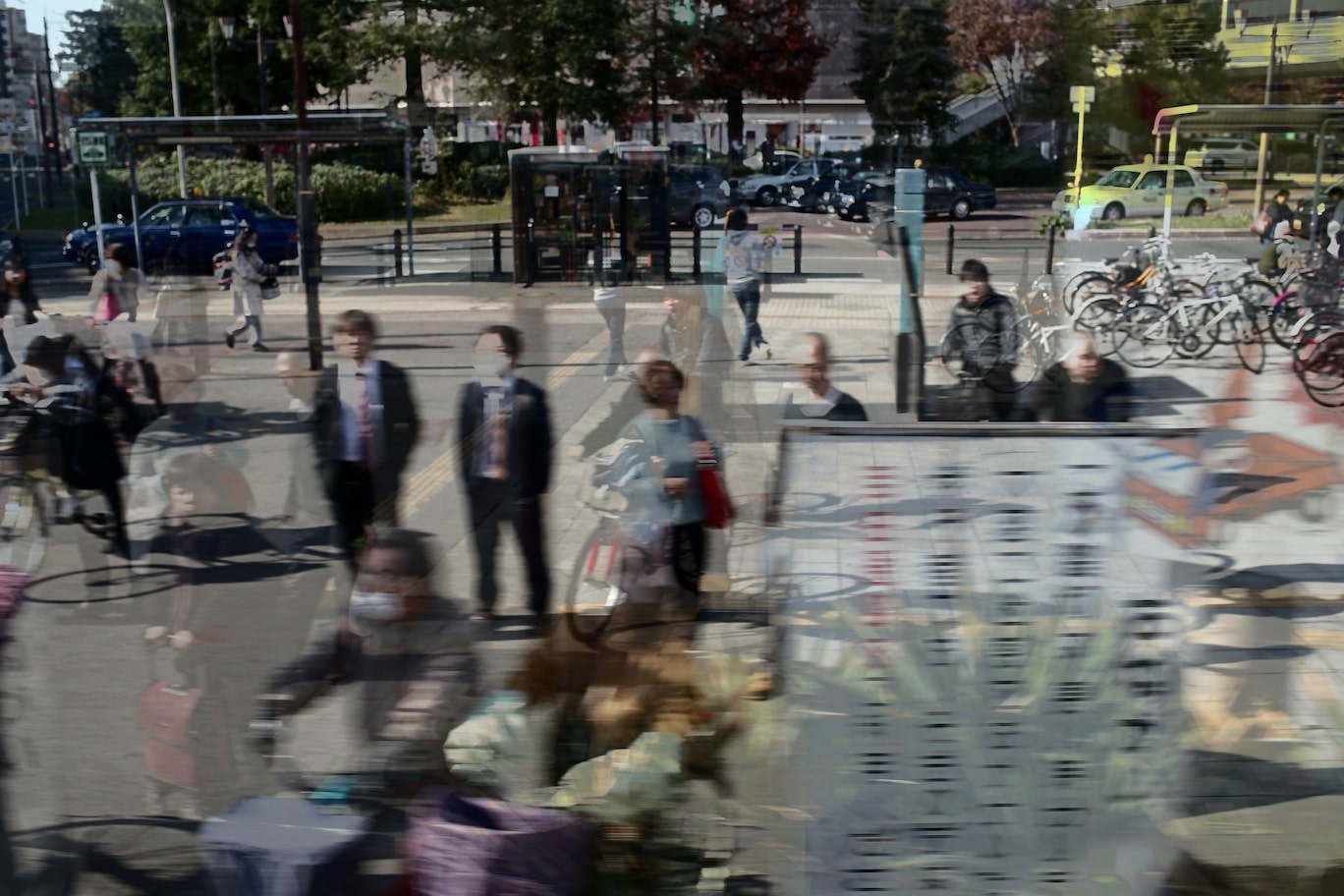
small
align-left
align-right
delete
This text is a transcribed and edited conversation the two authors held in November 2017.